Abstract
We have studied a woman with an apparent receptor-mediated resistance to cortisol on the basis of elevated 24-h mean plasma cortisol levels and increased urinary free cortisol. Plasma ACTH concentrations were normal but she was resistant to adrenal suppression by dexamethasone. No stigmata of Cushing's syndrome were seen. To study the proposed end-organ resistance to cortisol, we examined the glucocorticoid receptor (GR) in lymphocytes and in fibroblasts from this patient and from her son. Several molecular properties of the GR of lymphocytes from the patient were indistinguishable from that of normal control subjects. In thermolability assays, however, the patient's GR as well as her son's GR showed a striking heat sensitivity at 40 degrees and 45 degrees C when compared with GR from normal persons. In addition, data from the thermolability assays correlated well with the lack at 45 degrees C of dexamethasone-induced decrease in in vitro [3H]thymidine incorporation into lymphocytes derived from both patients.
Full text
PDF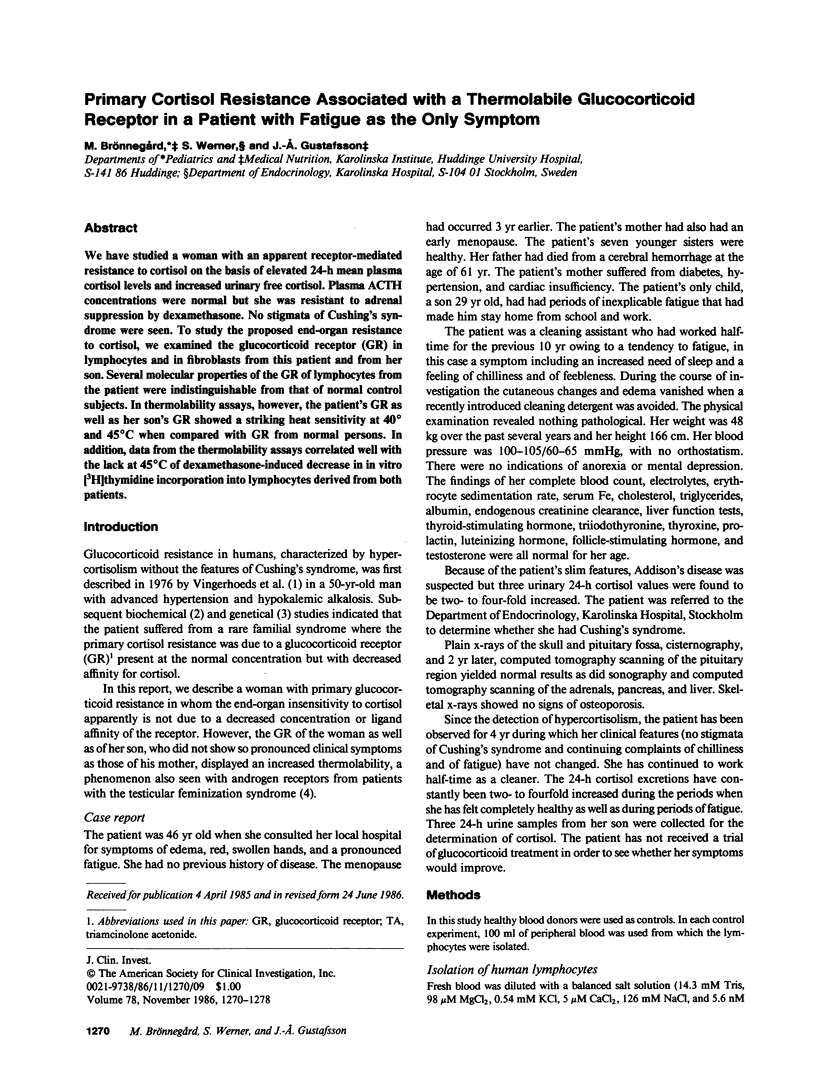
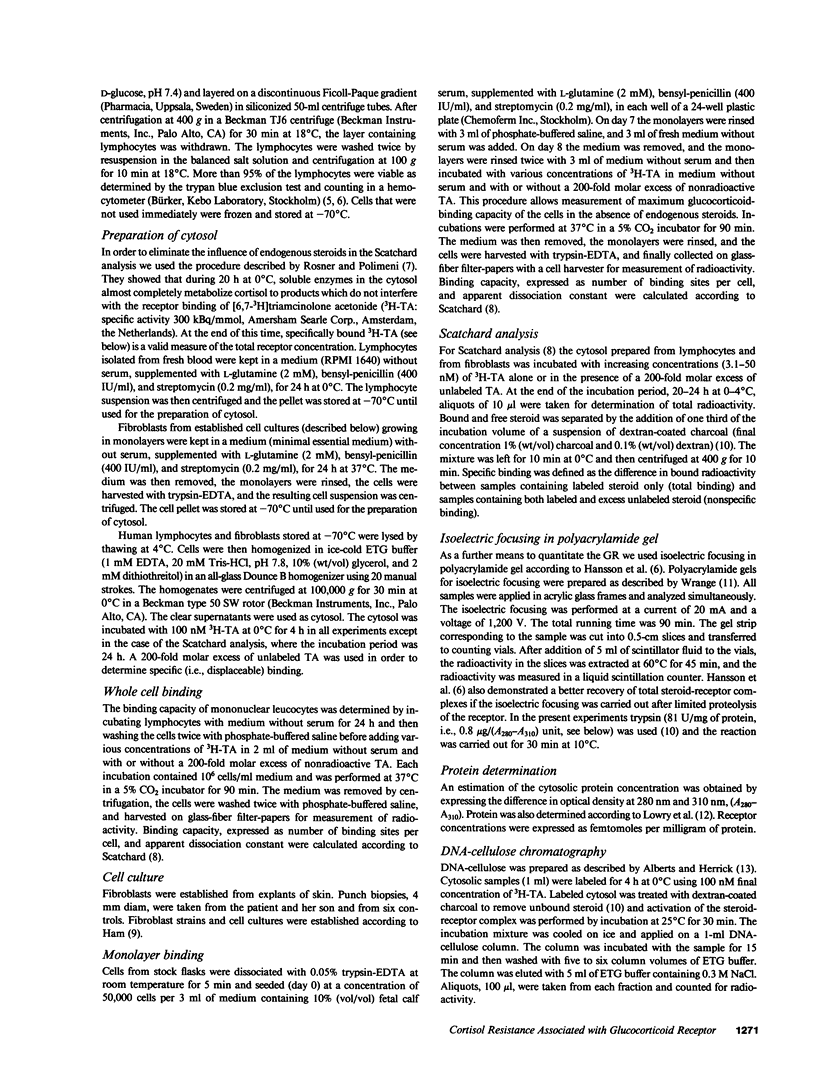
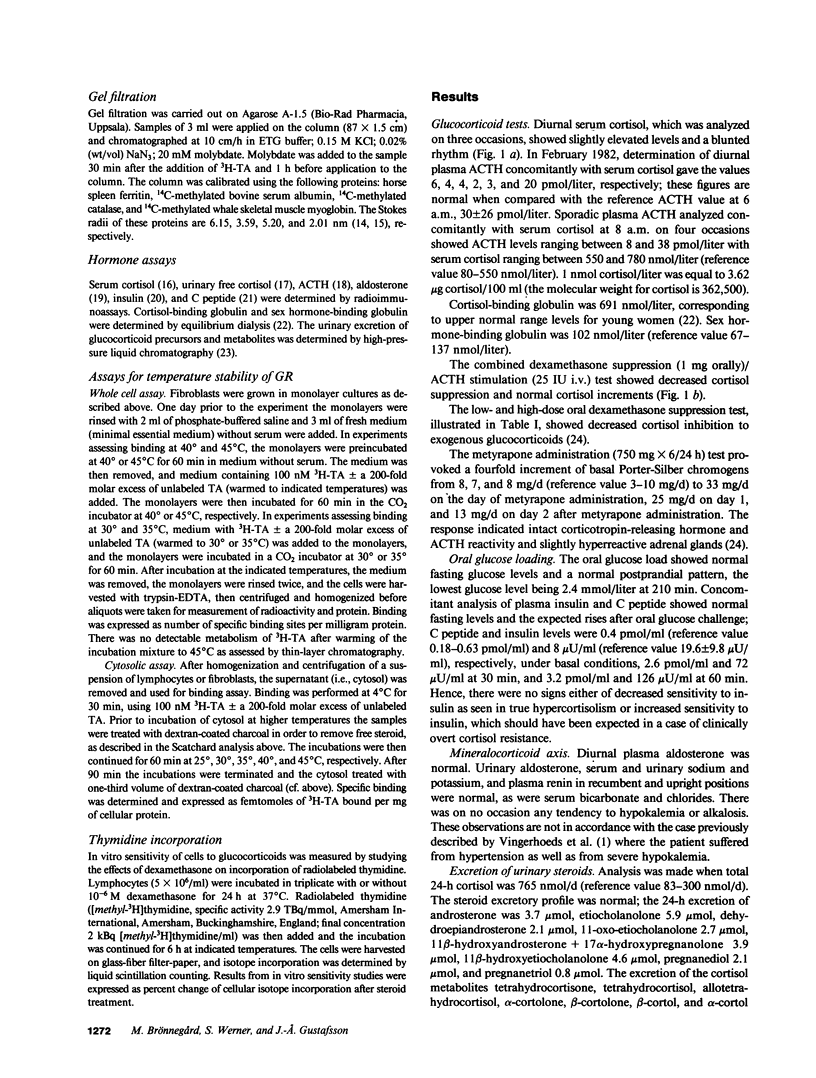
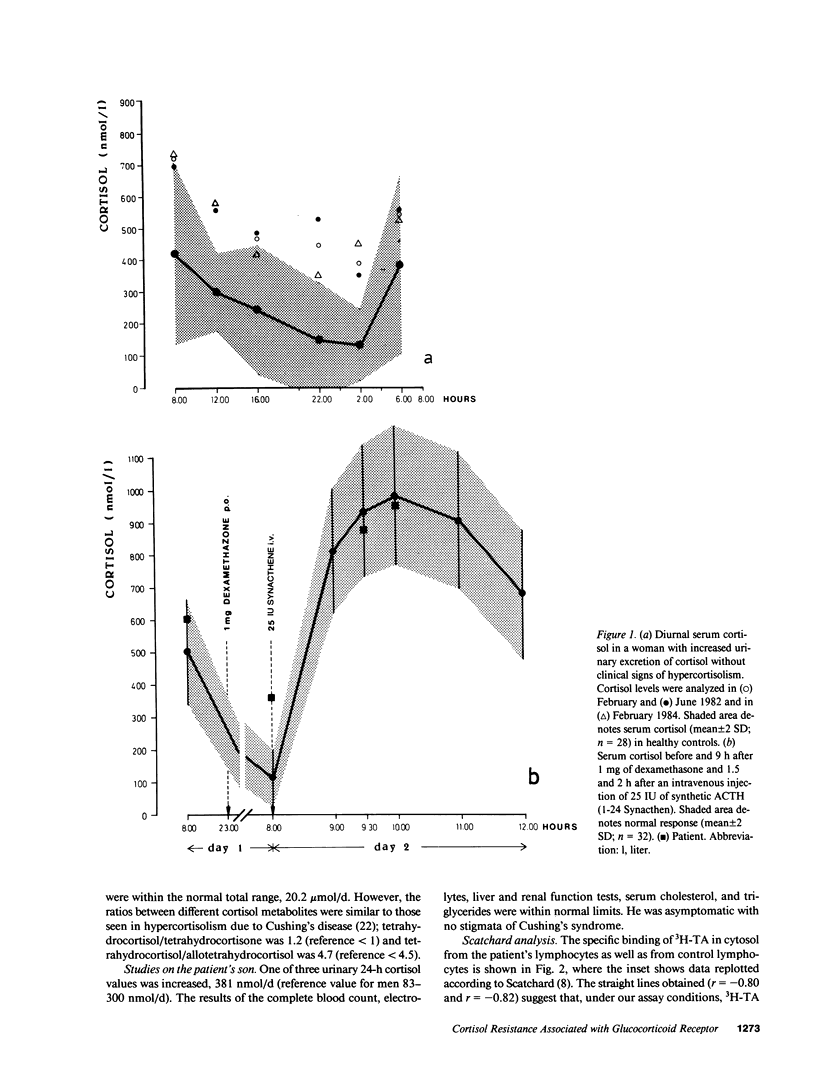
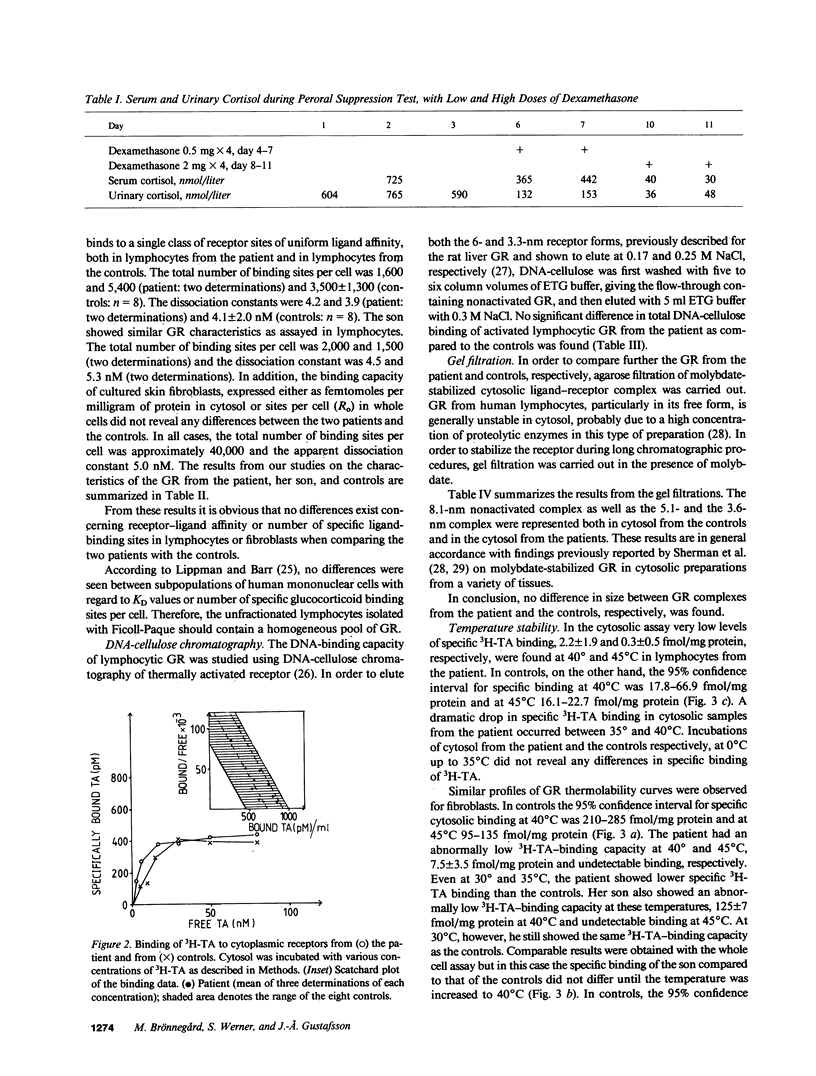
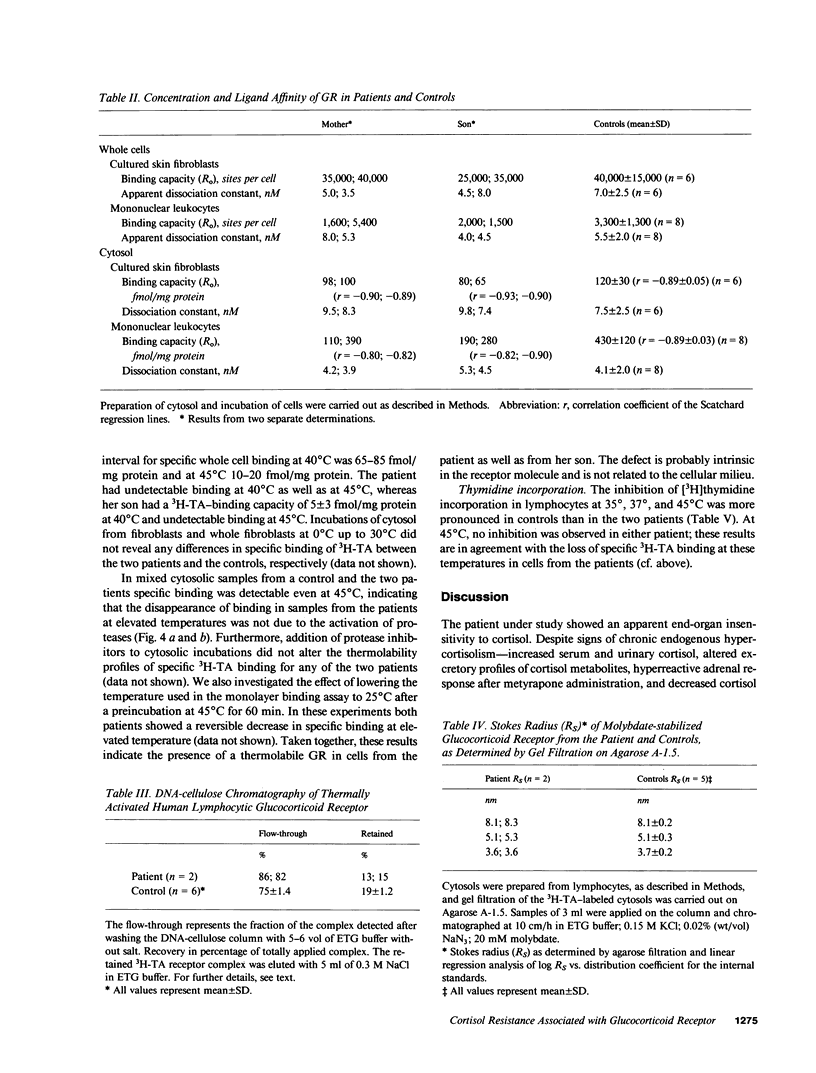
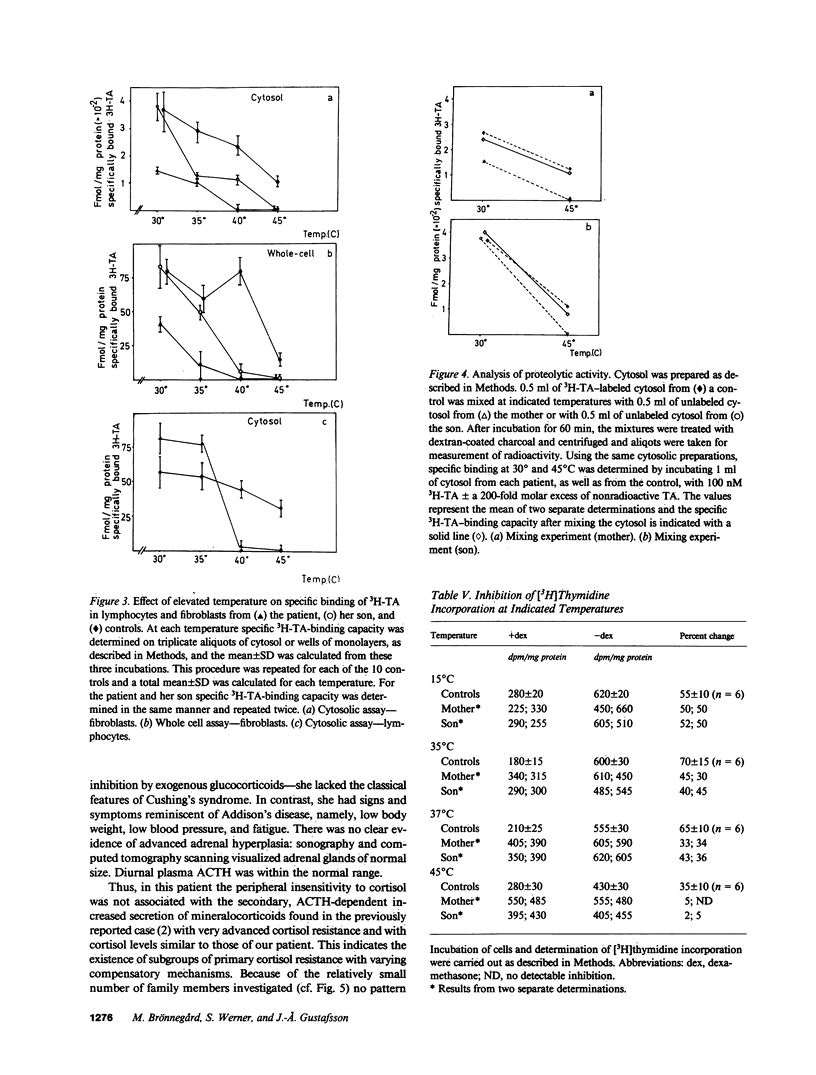
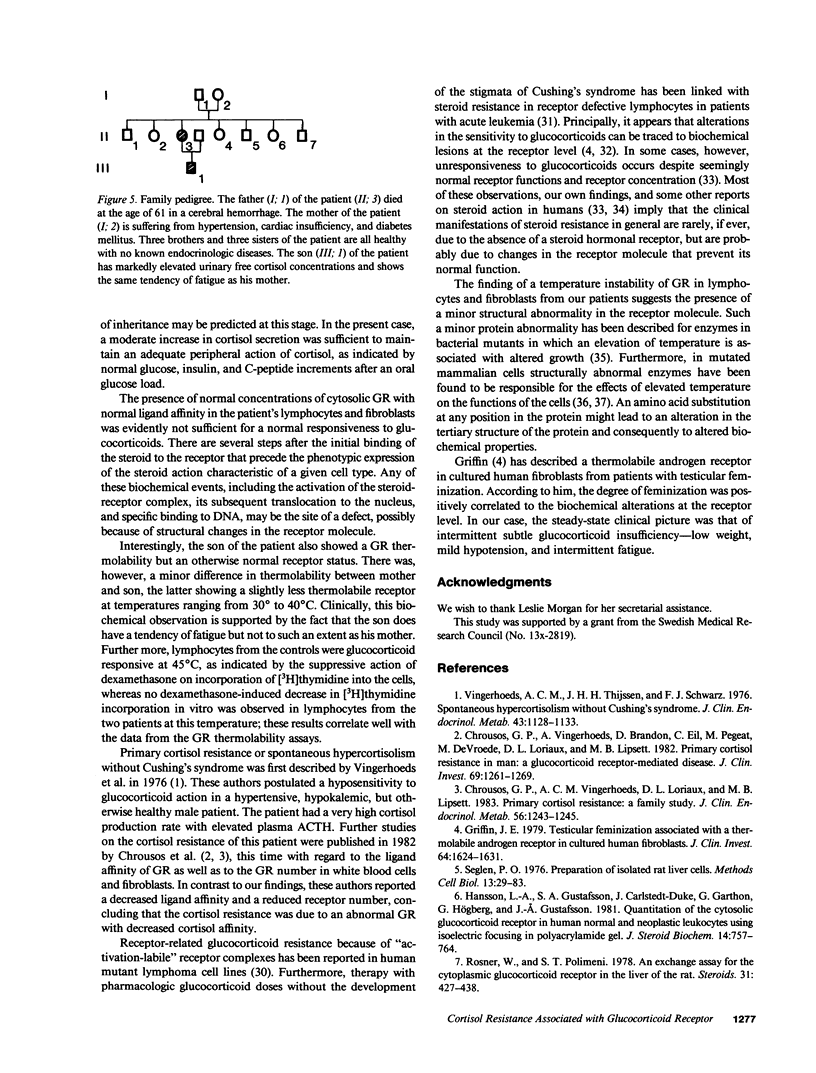
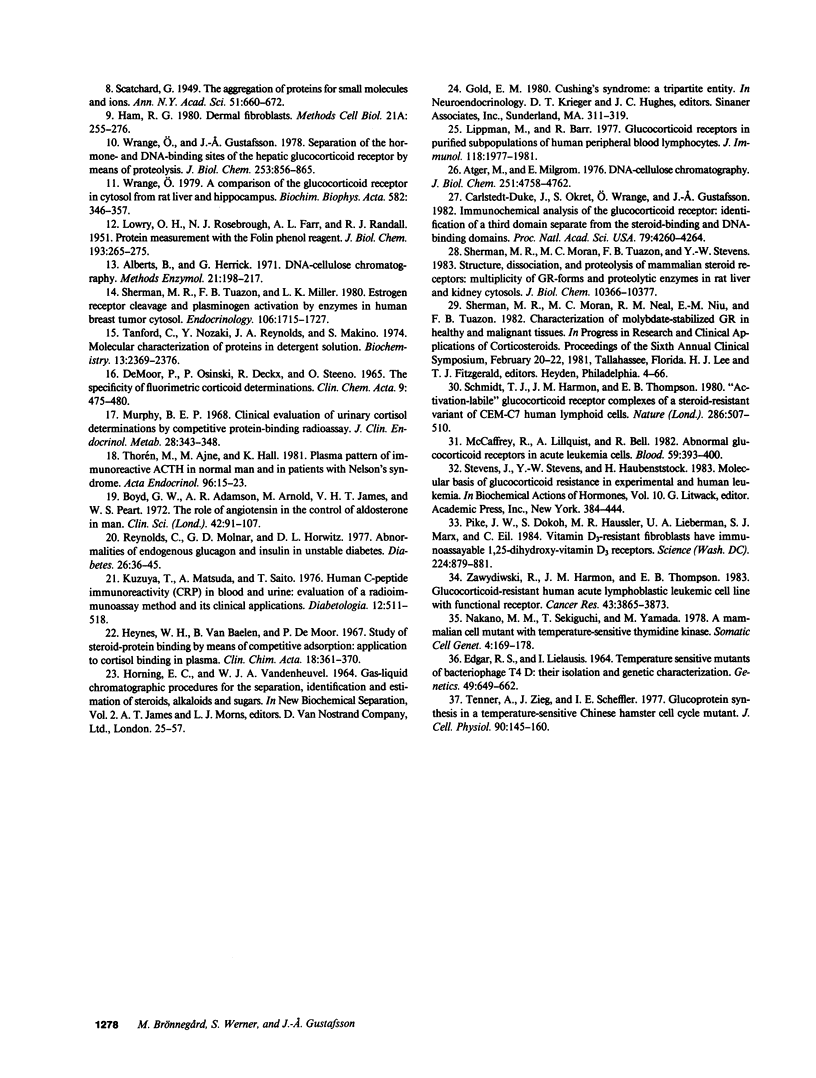
Selected References
These references are in PubMed. This may not be the complete list of references from this article.
- Atger M., Milgrom E. Mechanism and kinetics of the thermal activation of glucocorticoid hormone receptor complex. J Biol Chem. 1976 Aug 10;251(15):4758–4762. [PubMed] [Google Scholar]
- Carlstedt-Duke J., Okret S., Wrange O., Gustafsson J. A. Immunochemical analysis of the glucocorticoid receptor: identification of a third domain separate from the steroid-binding and DNA-binding domains. Proc Natl Acad Sci U S A. 1982 Jul;79(14):4260–4264. doi: 10.1073/pnas.79.14.4260. [DOI] [PMC free article] [PubMed] [Google Scholar]
- Chrousos G. P., Vingerhoeds A. C., Loriaux D. L., Lipsett M. B. Primary cortisol resistance: a family study. J Clin Endocrinol Metab. 1983 Jun;56(6):1243–1245. doi: 10.1210/jcem-56-6-1243. [DOI] [PubMed] [Google Scholar]
- Chrousos G. P., Vingerhoeds A., Brandon D., Eil C., Pugeat M., DeVroede M., Loriaux D. L., Lipsett M. B. Primary cortisol resistance in man. A glucocorticoid receptor-mediated disease. J Clin Invest. 1982 Jun;69(6):1261–1269. doi: 10.1172/JCI110565. [DOI] [PMC free article] [PubMed] [Google Scholar]
- EDGAR R. S., LIELAUSIS I. TEMPERATURE-SENSITIVE MUTANTS OF BACTERIOPHAGE T4D: THEIR ISOLATION AND GENETIC CHARACTERIZATION. Genetics. 1964 Apr;49:649–662. doi: 10.1093/genetics/49.4.649. [DOI] [PMC free article] [PubMed] [Google Scholar]
- Griffin J. E. Testicular feminization associated with a thermolabile androgen receptor in culutred human fibroblasts. J Clin Invest. 1979 Dec;64(6):1624–1631. doi: 10.1172/JCI109624. [DOI] [PMC free article] [PubMed] [Google Scholar]
- Ham R. G. Dermal fibroblasts. Methods Cell Biol. 1980;21A:255–276. [PubMed] [Google Scholar]
- Hansson L. A., Gustafsson S. A., Carlstedt-Duke J., Gahrton G., Högberg B., Gustafsson J. A. Quantitation of the cytosolic glucocorticoid receptor in human normal and neoplastic leukocytes using isoelectric focusing in polyacrylamide gel. J Steroid Biochem. 1981 Aug;14(8):757–764. doi: 10.1016/0022-4731(81)90012-1. [DOI] [PubMed] [Google Scholar]
- Kuzuya T., Saito T., Yoshida S., Matsuda A. Human C-peptide immunoreactivity (CPR) in blood and urine - evaluation of a radioimmunoassay method and its clinical applications. Diabetologia. 1976 Oct;12(5):511–518. doi: 10.1007/BF01219516. [DOI] [PubMed] [Google Scholar]
- LOWRY O. H., ROSEBROUGH N. J., FARR A. L., RANDALL R. J. Protein measurement with the Folin phenol reagent. J Biol Chem. 1951 Nov;193(1):265–275. [PubMed] [Google Scholar]
- Lippman M., Barr R. Glucocorticoid receptors in purified subpopulations of human peripheral blood lymphocytes. J Immunol. 1977 Jun;118(6):1977–1981. [PubMed] [Google Scholar]
- McCaffrey R., Lillquist A., Bell R. Abnormal glucocorticoid receptors in acute leukemia cells. Blood. 1982 Feb;59(2):393–400. [PubMed] [Google Scholar]
- Murphy B. E. Clinical evaluation of urinary cortisol determinations by competetive protein-binding radioassay. J Clin Endocrinol Metab. 1968 Mar;28(3):343–348. doi: 10.1210/jcem-28-3-343. [DOI] [PubMed] [Google Scholar]
- Nakano M. M., Sekiguchi T., Yamada M. A. A mammalian cell mutant with temperature-sensitive thymidine kinase. Somatic Cell Genet. 1978 Mar;4(2):169–178. doi: 10.1007/BF01538982. [DOI] [PubMed] [Google Scholar]
- Pike J. W., Dokoh S., Haussler M. R., Liberman U. A., Marx S. J., Eil C. Vitamin D3--resistant fibroblasts have immunoassayable 1,25-dihydroxyvitamin D3 receptors. Science. 1984 May 25;224(4651):879–881. doi: 10.1126/science.6326262. [DOI] [PubMed] [Google Scholar]
- Reynolds C., Molnar G. D., Horwitz D. L., Rubenstein A. H., Taylor W. F., Jiang N. S. Abnormalities of endogenous glucagon and insulin in unstable diabetes. Diabetes. 1977 Jan;26(1):36–45. doi: 10.2337/diab.26.1.36. [DOI] [PubMed] [Google Scholar]
- Rosner W., Polimeni T. An exchange assay for the cytoplasmic glucocorticoid receptor in the liver of the rat. Steroids. 1978 Mar;31(3):427–438. doi: 10.1016/0039-128x(78)90054-5. [DOI] [PubMed] [Google Scholar]
- Schmidt T. J., Harmon J. M., Thompson E. B. 'Activation-labile' glucocorticoid-receptor complexes of a steroid-resistant variant of CEM-C7 human lymphoid cells. Nature. 1980 Jul 31;286(5772):507–510. doi: 10.1038/286507a0. [DOI] [PubMed] [Google Scholar]
- Seglen P. O. Preparation of isolated rat liver cells. Methods Cell Biol. 1976;13:29–83. doi: 10.1016/s0091-679x(08)61797-5. [DOI] [PubMed] [Google Scholar]
- Sherman M. R., Moran M. C., Tuazon F. B., Stevens Y. W. Structure, dissociation, and proteolysis of mammalian steroid receptors. Multiplicity of glucocorticoid receptor forms and proteolytic enzymes in rat liver and kidney cytosols. J Biol Chem. 1983 Sep 10;258(17):10366–10377. [PubMed] [Google Scholar]
- Sherman M. R., Tuazon F. B., Miller L. K. Estrogen receptor cleavage and plasminogen activation by enzymes in human breast tumor cytosol. Endocrinology. 1980 Jun;106(6):1715–1727. doi: 10.1210/endo-106-6-1715. [DOI] [PubMed] [Google Scholar]
- Tanford C., Nozaki Y., Reynolds J. A., Makino S. Molecular characterization of proteins in detergent solutions. Biochemistry. 1974 May 21;13(11):2369–2376. doi: 10.1021/bi00708a021. [DOI] [PubMed] [Google Scholar]
- Tenner A., Zieg J., Scheffler I. E. Glycoprotein synthesis in a temperature-sensitive Chinese hamster cell cycle mutant. J Cell Physiol. 1977 Feb;90(2):145–160. doi: 10.1002/jcp.1040900202. [DOI] [PubMed] [Google Scholar]
- Thorén M., Ajne M., Hall K. Plasma pattern of immunoreactive ACTH in normal man and in patients with Nelson's syndrome. Acta Endocrinol (Copenh) 1981 Jan;96(1):15–23. doi: 10.1530/acta.0.0960015. [DOI] [PubMed] [Google Scholar]
- Vingerhoeds A. C., Thijssen J. H., Schwarz F. Spontaneous hypercortisolism without Cushing's syndrome. J Clin Endocrinol Metab. 1976 Nov;43(5):1128–1133. doi: 10.1210/jcem-43-5-1128. [DOI] [PubMed] [Google Scholar]
- Wrange O. A comparison of the glucocorticoid receptor in cytosol from rat liver and hippocampus. Biochim Biophys Acta. 1979 Jan 18;582(2):346–357. doi: 10.1016/0304-4165(79)90396-9. [DOI] [PubMed] [Google Scholar]
- Wrange O., Gustafsson J. A. Separation of the hormone- and DNA-binding sites of the hepatic glucocorticoid receptor by means of proteolysis. J Biol Chem. 1978 Feb 10;253(3):856–865. [PubMed] [Google Scholar]
- Zawydiwski R., Harmon J. M., Thompson E. B. Glucocorticoid-resistant human acute lymphoblastic leukemic cell line with functional receptor. Cancer Res. 1983 Aug;43(8):3865–3873. [PubMed] [Google Scholar]


